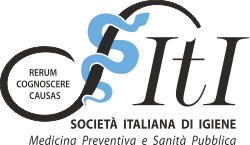Rotavirus is the most common cause of paediatric gastroenteritis (GE), particularly in infants and children under the age of five. It is a virus which is spread all over the world.
The rotavirus is capable of adhering to the cells of the small intestine and producing a toxin which destroys them, thereby hindering water absorption, causing a loss of liquids and electrolytes. In the absence of antibodies, a small amount of the virus is enough to cause the infection, which is generally symptomatic and severe in infants and young children.
Transmission routes
The virus is transmitted via the faecal-oral route: it is released in high quantities in the faeces of an infected person and enters the body when contaminated water or food are ingested. Elimination of the virus in many children can last up to ten days (in some cases up to two months) after the onset of the infection.
Since the virus is always present in the environment, in some cases it can be spread from person to person by touching or through contact with contaminated surfaces, especially in crowded communities (such as nurseries, nursing homes, etc.). In catering establishments, such as canteens, it can be caused by an infected operator handling food that will not require cooking, such as fruit and vegetables. In our country, the virus infects mainly in the winter period, between November and March. Having already contracted the infection once is not enough to give lasting immunity, although subsequent infections, both in childhood and in adulthood, can yield milder symptoms.
Symptoms and complications
In young children, rotavirus GE can cause a severe form of diarrhoea associated with dehydration, requiring hospitalisation.
Once the virus is in the body, it takes about two days (incubation) for symptoms to appear: mild to moderate fever (37.9 °C or greater), stomach upset, vomiting and watery diarrhoea. Fever and vomiting appear first, and generally begin to decline starting on the second day; subsequently diarrhoea occurs, which can last for about a week. Overall, the disease lasts on average 3-8 days.
When the infection manifests as a form of mild diarrhoea, the disease resolves on its own and with no consequences. This is not the case if diarrhoea causes severe dehydration: in infants, without adequate medical support, it can progress rapidly and be fatal. There are reported cases in which the virus can spread outside the intestine (kidney, liver, nervous system).
Impatto sulla popolazione
Every year, in the world, rotavirus GE causes about 150,000 deaths (1) in children under the age of 5 (data updated to 2015); of these, around 80% occur in developing countries (1). In the United States, a similar context to Italy, deaths associated with rotaviruses mainly affect children between 3 and 35 months of age (2): at present, however, it is estimated that vaccination could prevent 9 out of 10 deaths (3), and reduce the severity of the disease.
In addition to mortality, a significant problem linked to rotavirus infection is the impact on the health system. In Denmark, over a third of GE hospitalisations in children under 5 are caused by this virus. In the United States, each year the infection is responsible for 400,000 (4) medical examinations, 200,000 (4) emergency room visits and 55-70,000 (4) hospitalisations and between 20 and 60 deaths (4), with global costs reaching one billion dollars. There is also an impact on families: a study conducted in 2005-2008 in three European countries (5), including Italy, showed that, in 54% of cases (5), the infection causes a parent to be absent from work to look after the sick child.
The few strategies to limit the spread of rotavirus include hygienic norms (washing hands with soap or detergents, etc.) and breastfeeding (for the acquisition of maternal antibodies). Since there is no antiviral therapy for rotavirus infection (and, obviously, since it is a virus, antibiotics are unnecessary), vaccination remains the only true preventive method currently available. In fact, antibodies, whose production is stimulated by the vaccine, are the main protective mechanism against viral infection.
Therefore, vaccination is a important strategy to fight infection. A recent systematic review of the literature on the global effectiveness of anti-Rotavirus vaccines between 2006 and 2016 has shown that they are able to reduce the appearance of GE in the infant population: Rotarix vaccine (RV1) by 84%, 75% and 57% in countries with low, medium and high infant mortality, respectively, and RotaTeq (RV5) by 90% and 45% in countries with low and high infant mortality, respectively. (6) In Belgium, research has also shown that, in children aged 2 to 24 months, the number of rotavirus infections dropped by two thirds one year after the introduction of the vaccine; the rate of admissions to hospital for GE, on the other hand, fell by a third. In the United States, in the period prior to the introduction of the vaccine (2000-2006), there were about 100 hospitalisations per 10,000 children during the virus’ active season; thanks to vaccination, this fell to 36 hospitalisations per 10,000 children under the age of five (in 2013) (7). In Germany, according to a study carried out in 2010-11, the vaccine was effective in preventing hospital admissions: individuals who had been vaccinated, for example, were hospitalised in only 23% of cases, compared to 61% for unvaccinated subjects.
Sources / Bibliography
- Behrman RE et al., Nelson, trattato di Pediatria: Torino, Ed. Minerva Medica 2004
- Mahy BWJ, van Regenmortel MHV (edd.), Encyclopedia of Virology (3rd ed.): Oxford, Elsevier 2008
- Parashar UD et al., Rotavirus and severe childhood diarrhea. Emerg Infect Dis 2006; 12: 304-304
- Dickey M, Rotavirus meningoencephalitis in a previously healthy child and a review of the literature. Pediatr Infect Dis J 2009; 28(4): 318-321
- Medici MC, Case report: detection of rotavirus RNA in the cerebrospinal fluid of a child with rotavirus gastroenteritis and meningism. J Med Virol 2011; 83(9): 1637-1640
- Centers for Disease Control and Prevention – CDC, Prevention of rotavirus gastroenteritis among infants and children: Recommendations of the Advisory Committee on Immunization Practices (ACIP). Morb Mortal Wkly Rep 2009; 58 (RR2): 1-25
- Esposito DH et al., Baseline estimates of diarrhea-associated mortality among United States children before rotavirus vaccine introduction. Pediatr Infect Dis J, 2011 Nov; 30(11): 942-947
- Fischer TK et al., The burden of rotavirus disease in Denmark 2009-2010. Pediatr Infect Dis J 2011; 30(7): e126-e129
- Van der Wielen M et al., Impact of community-acquired paediatric rotavirus gastroenteritis on family life: data from the REVEAL study. BMC Fam Pract 2010; 11: 22
- Plenge-Bönig A et al., Breastfeeding protects against acute gastroenteritis due to rotavirus in infants. Eur J Pediatr. 2010; 169(12): 1471-1476
- Soares-Weiser K et al., Vaccines for preventing rotavirus diarrhoea: vaccines in use. Cochrane Database of Systematic Reviews 2010; 5: art. n. CD008521
- Raes M et al., Reduction in pediatric rotavirus-related hospitalizations after universal rotavirus vaccination in Belgium. Pediatr Infect Dis J 2011; 30(7): e120-e125
- Curns AT et al., Reduction in acute gastroenteritis hospitalizations among US children after introduction of rotavirus vaccine: analysis of hospital discharge data from 18 US states. J Infect Dis 2010; 201(11): 1617-1624



